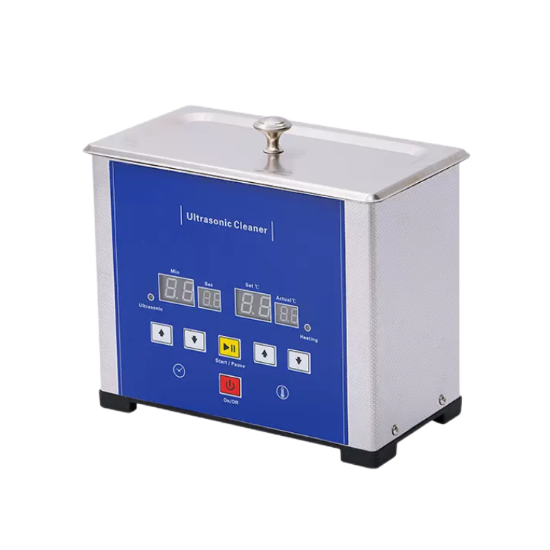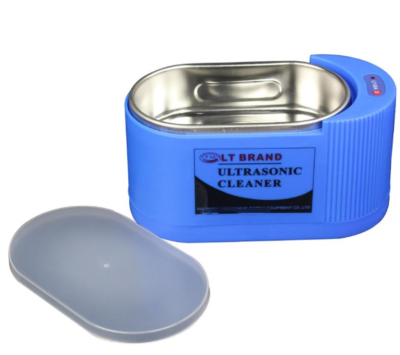1. Introduction: The Small Ultrasonic Cleaner with Critical Role of Cleanliness in SMT Manufacturing
Why Cleanliness Matters in SMT
In the world of Surface Mount Technology (SMT) manufacturing, cleanliness isn’t just a desirable trait; it’s a necessity. The tiniest speck of dust, residue, or contamination on SMT components can lead to manufacturing defects, reduced product quality, and operational disruptions. Cleanliness is the linchpin that ensures the smooth operation of SMT production lines and the delivery of high-quality electronics.
Challenges of SMT Cleaning
However, achieving the level of cleanliness required in SMT manufacturing is no easy feat. Traditional cleaning methods can be time-consuming, labor-intensive, and may not yield consistent results. This is where small ultrasonic cleaner machines come into play, transforming the way SMT components are cleaned.

2. The Evolution of Small Ultrasonic Cleaner Machines
How Ultrasonic Technology Works
Small ultrasonic cleaner machines utilize a fascinating technology based on the principle of cavitation. High-frequency sound waves create countless tiny bubbles in the cleaning solution. These bubbles implode upon contact with surfaces, dislodging contaminants. This process, known as cavitation, ensures a thorough and uniform cleaning of SMT components.
Advancements in SMT Cleaning Equipment
Over the years, small ultrasonic cleaner machines have evolved to meet the specific needs of SMT cleaning. They now feature specialized settings and materials to handle delicate electronic components, ensuring the highest level of precision and safety.
3. Benefits of Using Small Ultrasonic Cleaner Machines in SMT
Precision Cleaning
Small ultrasonic cleaner machines excel in precision cleaning, reaching areas that are practically impossible to access through manual cleaning methods. This level of precision is crucial in SMT, where even the tiniest contaminants can disrupt electronic connections.
Time and Cost Efficiency
Compared to labor-intensive manual cleaning, ultrasonic cleaners drastically reduce cleaning time, improving the overall efficiency of SMT lines. Additionally, they reduce the need for excessive amounts of cleaning solvents, resulting in cost savings.
Environmental Considerations
Ultrasonic cleaning is environmentally friendly, as it typically requires fewer chemicals and generates less waste compared to traditional cleaning methods, aligning with sustainability goals.
4. Selecting the Right Ultrasonic Cleaner for Your SMT Line
SMT Specific Features
When choosing an ultrasonic cleaner for your SMT line, consider features such as specialized cleaning modes for delicate components and compatibility with the materials commonly used in SMT manufacturing.
Dimensions and capacities
Choose the appropriate size, capacity, and inner tank according to your requirements. Make sure it can accommodate the size and number of PCBA boards typically handled in an SMT production line.
5. Cleaning Process: Step-by-Step Guide for SMT Applications
Preparing Components for Cleaning
Before placing components in the ultrasonic cleaner, they must be prepared by removing any excess solder, flux, or contaminants. Proper preparation is crucial for achieving optimal cleaning results.
Operating an Ultrasonic Cleaner
The cleaning process includes setting the appropriate detergent, temperature, and cleaning time, with or without heat. Place the accessories in the inner tank to ensure that the cleaning liquid covers the material being cleaned
6. Maintenance and Care for SMT Ultrasonic Cleaners
Routine Maintenance Practices
Regularly maintaining your ultrasonic cleaner ensures its longevity and continued performance. This includes cleaning the tank, changing the cleaning solution, and inspecting components for wear and tear.
Troubleshooting Common Issues
Being familiar with troubleshooting procedures for common issues can help minimize downtime in your SMT production line and ensure consistent cleaning results.

7. Safety Measures in SMT Ultrasonic Cleaning
Chemical Handling and Disposal
Proper handling and disposal of cleaning solutions are essential to prevent environmental harm and ensure the safety of personnel.
Electrical Safety in the SMT Environment
SMT environments often involve sensitive electronic components and equipment. Ensuring electrical safety is crucial to prevent damage and accidents.
8. Case Studies: Real-World Applications of Small Ultrasonic Cleaner Machines in SMT
Improving Productivity and Reliability
Real-world examples showcase how the implementation of small ultrasonic cleaner machines can significantly improve productivity and product reliability in SMT manufacturing.
Cost Savings and ROI
Case studies demonstrate the cost-saving benefits and return on investment achieved by integrating ultrasonic cleaning technology into SMT processes.
9. Conclusion: The Future of SMT Cleaning
Embracing Innovation for Enhanced Efficiency
As SMT technology continues to advance, embracing innovations like small ultrasonic cleaner machines is key to maintaining high standards of cleanliness, productivity, and efficiency in SMT manufacturing.
10. FAQs: Answering Your Questions on SMT Ultrasonic Cleaners
What types of SMT components can be cleaned with ultrasonic cleaners?
Ultrasonic cleaners are versatile and can effectively clean a wide range of SMT components, including printed circuit boards (PCBs), surface mount devices (SMDs), soldered assemblies, connectors, and even stencils. Their precision cleaning capabilities make them suitable for delicate and intricate electronic parts.
Can ultrasonic cleaning replace manual cleaning in SMT?
While ultrasonic cleaning is highly efficient and thorough, it’s important to note that it may not entirely replace manual cleaning in SMT. Manual cleaning may still be required for certain components or situations that demand specialized attention. However, ultrasonic cleaners significantly reduce the need for extensive manual labor and can handle the bulk of cleaning tasks in SMT, making the process more efficient.
Are there specific cleaning solutions recommended for SMT applications?
Yes, there are specific cleaning solutions formulated for SMT applications. These solutions are designed to effectively remove flux residues, solder paste, and other contaminants commonly found in SMT manufacturing. Using the recommended cleaning solution ensures optimal cleaning results while maintaining the integrity of sensitive electronic components.
How can I ensure the safety of sensitive electronic components during cleaning?
To ensure the safety of sensitive electronic components during cleaning, consider the following precautions:
- . Use appropriate cleaning solutions: Select cleaning solutions that are compatible with the materials in your components to avoid damage.
- . Follow recommended settings: Set the ultrasonic cleaner to the appropriate parameters for SMT components, such as temperature, cleaning time, and power level.
- . Inspect components before and after cleaning: Carefully examine components before and after the cleaning process to identify any issues or damage.
- . Handle components with care: When loading and unloading components from the ultrasonic cleaner, handle them gently to prevent physical damage.
What ROI can I expect from implementing ultrasonic cleaners in my SMT line?
The return on investment (ROI) from implementing ultrasonic cleaners in your SMT line can be substantial. It typically includes cost savings from reduced labor, decreased solvent usage, improved product quality, and increased throughput. The effectiveness of use will depend on the size of the SMT operation, the vibration frequency of the ultrasonic cleaner, and the environmental factors at the time
However, many companies report significant cost savings and improved production efficiency after integrating ultrasonic cleaning technology.



